Human performance: Take note of error precursors
Welcome to the fifth blog in our Human Performance series and thank you for the feedback to the fourthblog in this series (if you have missed my previous blogs, you can catch up here). In this blog I am going to introduce you to the WITH Model (sometimes referred to as TWIN).

Human error is predictable – just examine the error precursors (Yulia Koltyina/123rf)
As we know, human performance is a theory with a tried and tested methodology, based on an acceptance that people are fallible and prone to error. We have already discovered how and why this is the case. You may also recall me saying last time that human error is predictable. Yes, we are creatures of habit and, over time, we start to understand our own error footprint – ie where, what, how and when we are likely to make errors; for example, when we’re tired, stressed or bored, or perhaps when dealing with complex data, copying information, and so on.
For me personally, I am most error-prone in the evenings after a long day at work and so I know to make sure that anything of importance that I’m doing at home of an evening gets checked by someone else.
Over time, we also learn about our propensity for error in the work environment, both as individuals and collectively as a team, department or organisation. We can use lagging indicators of events and unwanted outcomes we have already suffered and investigated or reviewed, we can look at audit reports and non-conformances and, for those of us who are now starting to introduce safety thinking, we have appreciative enquiries, task observations and on-the-job coaching.
In the previous blog we also talked about environments where our error propensity is increased significantly depending upon our performance mode at any given time.
So, if we know what tasks and activities increase our propensity for error and we then know what our personal triggers are, it stands to reason that, with a little prompting, we should be able to predict the types of error we will make and where in the task or activity we will make them. We can then introduce error reduction tools and techniques into the process, which will ultimately stop us from falling in to those error traps. One such prompt is the WITH (Work environment; Individual capabilities; Task demands; and Human nature) Model. See tables below.
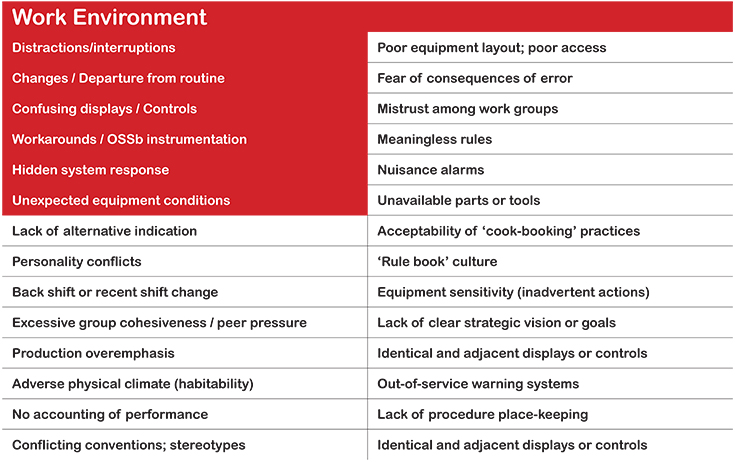
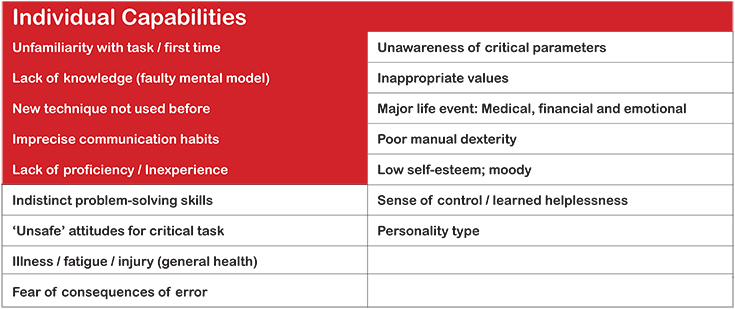
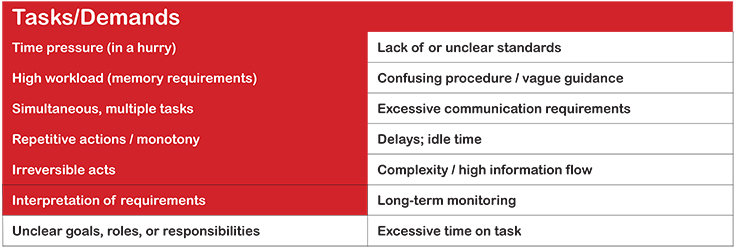
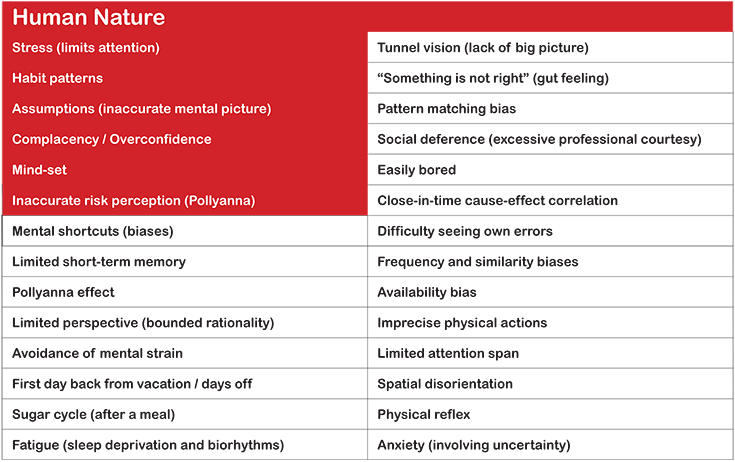
The WITH model was derived from an in depth study of the Institute of Nuclear Power Operations (INPO) event database. The model consists of the four groups of error precursors mentioned above, which are behaviour or performance shaping factors. In the tables below, the error precuursors in red are more prevalent and are listed in order of impact. Other error precursors are not listed in any particular order.
We refer to this as ‘working WITH error precursors’ because that is what ‘work as done’ actually looks like. There are many ways for you to use the WITH model in your organisation.
After introducing your employees to the concept of human error, a good starting point is to familiarise them with the WITH model. We use lanyard cards, which are worn by frontline staff so that they can refer to them during their pre-job brief (this will be covered in a future blog) or when the circumstances of the job have changed, such as weather conditions, adjacent working parties, out of service equipment, etc. An example is below.
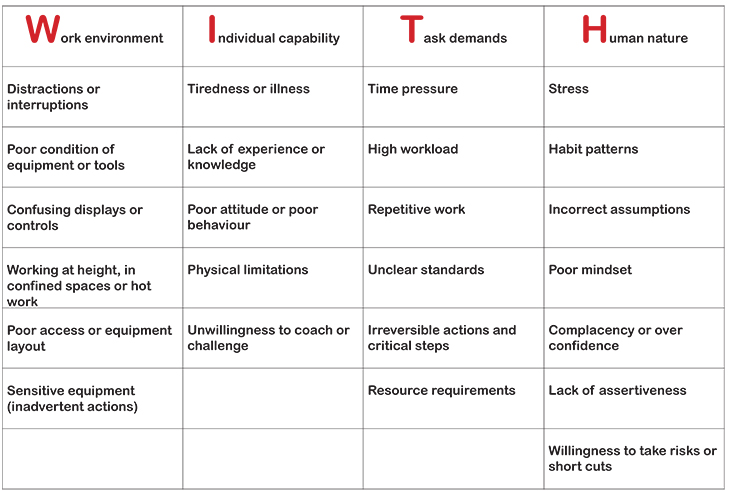
Knowledge workers are those individuals who have a: “Remote hand in the task or activity,” for example procedure writers, planners, designers, engineers, permit issuers, supervisors, managers, etc. Referring back to my previous blog, knowledge workers tend to be responsible for latent errors or latent conditions, ie the traps that lie undetected or dormant in systems, processes and procedures. Knowledge workers’ use of the WITH model is two-fold. They need to think about the errors that they can make, just like the frontline workers, and so can be issued with the cards in the same way, but they also need to think about the task, activity, process and procedure that they are designing for others to work on or with. Are they building error precursors into their design or document? Can these be avoided or mitigated at design stage? For example, when designing a conveyor system, is it possible to ensure that the motor and maintainable parts can be reached without the need to work at height, or in relative darkness? If designing a building where all the cables will be run through an underground basement, has the likelihood of flooding been considered? Does the height of the basement ceiling mean that people will have to stoop to gain access? For these employees, having the WITH model on a desk card or wall poster might be more appropriate, or there may be more intuitive ways of using the tool, such as building it into software programmes.
So, we know we all make errors, and we now know what might precede the error thanks to the WITH Model, but what now?
Work with what you know and allow your natural instinct to kick in. Take this example. It’s your first day back at work after annual leave, you are asked to do an urgent job you haven’t done for some time because a piece of equipment has broken down over the weekend. You recall that the procedure was incorrect the last time the job was done and you’re not sure whether it has been updated. You know that a colleague who normally does the job is at work today but he or she is very busy. The line has been down for the morning shift and if you don’t get it sorted, it will also be down for the next shift, which comes in at 14:00hrs.
A number of precursor errors have been listed above. Can you identify them? And how would you mitigate the risk of something going wrong in this scenario?
Please provide us with some feedback and/or have a go at this little exercise with your work colleagues or team. These are things that catch us out every day. There is nothing unique or unusual here, so what exactly do you do now?
In my next blog I will start introduce a whole suite of error reduction tools and techniques which, once an error has been predicted, you can select from to help reduce the likelihood of it happening or reduce the consequences when it does.
Teresa Mullen is with Paradigm Human Performance
Teresa Mullen, 29/08/2018